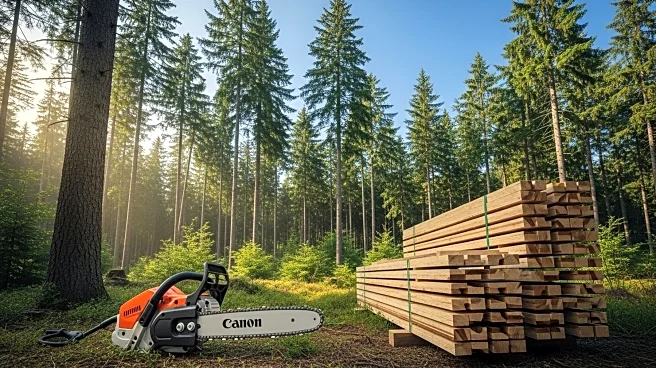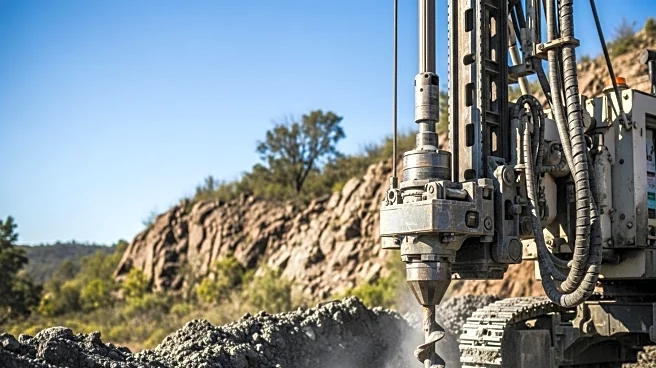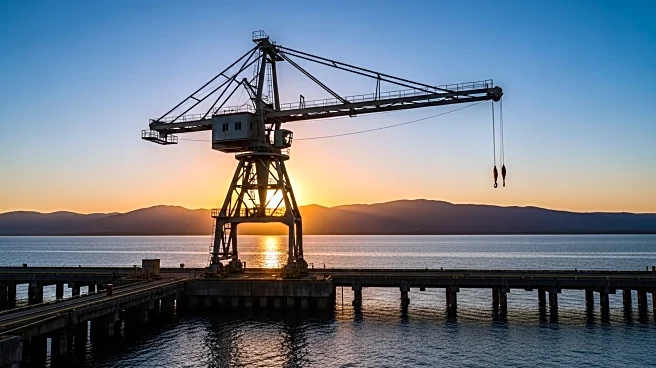What's Happening?
The Canadian forestry sector is exploring the transition to an all-electric supply chain to improve the carbon balance of cross-laminated timber (CLT). CLT is already net negative in terms of carbon emissions, storing more carbon than it emits during production. However, emissions from diesel-powered machinery, natural gas kilns, and petrochemical adhesives remain significant. The sector aims to eliminate these emissions through available technologies and focused policies, making the forestry chain close to zero emissions. Canada is well-positioned to act, with sustainable forest management frameworks allowing for increased harvesting without threatening forest health. The country harvested only 60% of the allowable annual cut in 2022, indicating potential for scaling up value-added wood products like CLT.
Why It's Important?
The shift to an all-electric forestry supply chain is crucial for enhancing the environmental benefits of CLT, a material increasingly used in construction for its carbon storage capabilities. By reducing emissions in the supply chain, the forestry sector can strengthen the climate case for mass timber, contributing to global efforts to combat climate change. This transition also presents economic opportunities, as global demand for low-carbon construction materials rises. Canada can lead in this area, leveraging its sustainable forest management practices and existing climate funds to support the transition. The move aligns with broader industrial strategies, offering potential for job creation and economic growth while reinforcing environmental stewardship.
What's Next?
The next steps involve converting kilns from fossil fuels to biomass boilers or electric heat pumps, establishing zero-emission freight corridors, and developing lignin-based adhesives to replace fossil resins. Policy support, including carbon pricing and government procurement requirements, will be critical in driving these changes. Trials of electric log trucks in British Columbia have shown promising results, and scaling up these trials to fleets is anticipated. Factories can further reduce emissions by combining grid power with on-site solar and biomass cogeneration. Workforce development will be necessary to train operators and technicians for new equipment and processes.
Beyond the Headlines
Decarbonizing the forestry chain is not only an environmental initiative but also an industrial strategy. It represents a form of adaptation to climate change, making the sector more resilient while reducing its footprint. Indigenous partnerships and sustainable regeneration initiatives can support increased yield while maintaining ecosystem integrity. The transition to an all-electric supply chain could transform forestry into a data-driven, sustainable industry, reinforcing the case for mass timber as a core building material in the 21st century.












